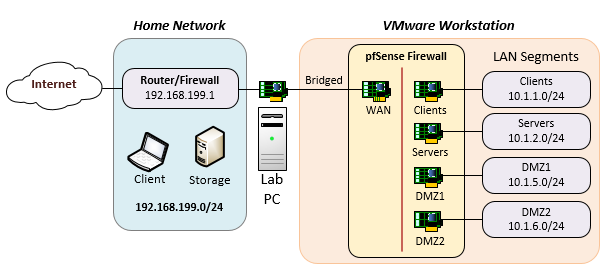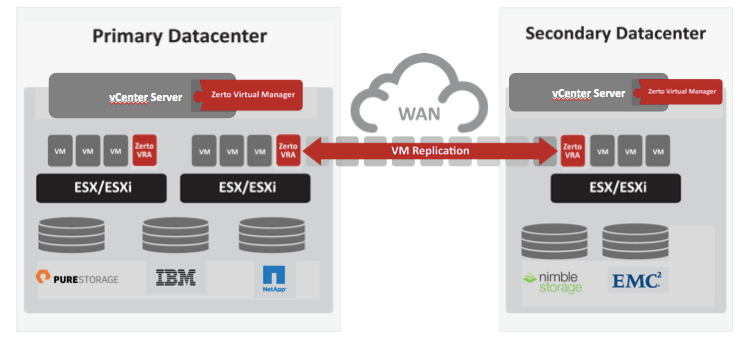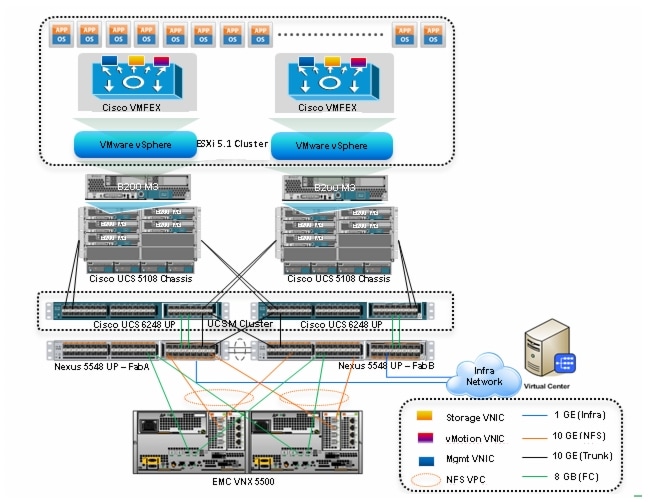Earlier to use a second Operating System, we either used another machine or do a dual boot, but with time everything has changed. We can now explore multiple Operating Systems without installing another one on our system. No longer you need to purchase a new machine or make space for another Operating System. Virtualization software for Windows has made it possible to use dual operating systems on a single machine.

Virtualization allows users to test a software or the entire operating system without installing or removing the default OS from the PC. Virtualization allows using different Operating Systems on regular PC for testing, experiments, coding or any sort of reasons. For example, if you want to work on a Mac interface on your Windows Laptop or Windows 10 on a Mac Machine, you can do this by using free VM software for Windows 10. Here is a review and comparison of the best virtual machine for Windows 10.
Best virtual machine for Windows 10:
VMware Workstation Pro
Instagram for pc free download. Enjoy the videos and music you love, upload original content, and share it all with friends, family, and the world on YouTube.
VMware Workstation Pro is one of the best virtualization software for Windows that gives you a wide range of features to explore. VMware Workstation Pro allows you to run multiple operating systems on a single machine without installing different operating systems. All these OS run as a virtual machine and lets you test and build the software with utmost compatibility with almost all the operating systems.
- The Industry Standard: VMware Workstation. An evaluation version is available. Easy to use once it.
- If you’re comparing VMware vs. VirtualBox, you’re looking for a tool that will help you create and provision virtual machines (VMs) on desktop devices running an x86-based platform. Pretty straightforward, except it’s not.
VMware Workstation Pro Features
- Ultimate Companion to vSphere Integration
- Create multiple screenshots or rollback to a point with snapshots
- Clones for Rapid Duplication uses linked clones to quickly initiate a VM
- Supports DirectX 10.1 and OpenGL 3.3 for High-Performance 3D Graphics
- Allows you to create enormous VMs on 16 vCPUs, 64 GB of memory and 8 TB of virtual disks
- REST API offers over 20 controls for operations like VM Power, Host and Guest VM
- Test App flexible Virtual Network Simulation for powerful virtual networking
- Supports heavy application to run on Server and Desktop VM environment
- Protect your data on VMware Workstation Pro by Restricted Access on VM
- VMware Workstation Pro supports 4K UHD / QHD High-Resolution Display
- Share Virtual Machines among your teammates in the organization
- Compatible with Windows, Mac, Linux, and other platforms
Parallels Desktop
If you want to experience a Windows Desktop environment on a Mac system or vice versa, Parallel VM is the best virtualization software for Windows and Mac systems. Even Apple provides ‘Boot Camp’ as their free too to run a virtual machine, however, regular users, need to switch to parallel VM. Whatever is your native OS, you can run a different OS side-by-side. A parallel desktop is often required when you want to run an application that doesn’t support your OS and needs a different OS.
Parallel VM allows you to get Windows Notifications in the Mac notification center. The latest built of Parallel VM allows simulating Windows XP, 7, 8, and 10 environments on your Mac machine. All Mac and Windows applications can run side-by-side using Parallel VM without rebooting the system. File sharing between OS is also possible with the Parallel VM.
Parallels Desktop Features
- Virtual RAM & Virtual CPUs for each VM session
- Easy download and installation process of Windows 10
- Optimized and updated to work with macOS Catalina (10.15)
- Customized Touch Bar for instant access of Windows applications
- Connect & Pair USB, FireWire, Thunderbolt, and all Bluetooth devices
- 24/7 premium phone & email support for business cloud services
- One-Click tuning of Retina Display and performance as per need
- Network conditioner to simulate instant access to Windows 10
- Virtual machine encryption for added security
You may also check out the list of complete Features of Standard, Pro and Business edition.
Oracle VM Virtualbox
The Virtualbox Windows 10 VM is one of the best virtual machines for Windows as it gives you a wide range of host and guest combinations. The second most amazing fact about Virtualbox Windows 10 VM is it’s FREE of cost available for all OS.
Irrespective of Windows XP onwards, Linux level 2.4 and above, Windows NT, Server 2003, OpenSolaris, Solaris, and even OpenBSD Unix, you have it all packed in one free VM software for windows 10.
Virtualbox Windows 10 VM also runs on Mac machines, and host a client Mac VM session as well. It only takes 30 MB of disk space even after being such a powerful Windows 10 VM software. The disk space may increase to certain Gigabytes depending on the virtual OS you are trying to use.
Oracle VM Virtualbox Features
- Virtualbox Windows 10 VM has a super portability feature regardless of OS
- It doesn’t require hardware virtualization as it got built-in hardware acceleration
- Virtualbox Windows 10 VM supports shared folders, seamless Windows with 3D virtualization
- It has incomparable hardware compatibility with multiple Input/Output and Processing devices
- Connect with any Remote machine display using the Virtualbox Windows 10 VM
- Capture multigeneration snapshots of your sessions for future references
Check out the list of complete Features of the Virtualbox Windows 10 VM edition.
Comparison Chart
| Product | Parallels Desktop (for Mac) | VMware Workstation Pro (for Mac) | Oracle VM VirtualBox (for Mac) |
|---|---|---|---|
| Best For | Casual Exploring OS | Testing & Coding | Professional Use |
| Mac version | Yes | Yes | Yes |
| Windows version | No | Yes | Yes |
| Linux version | No | Yes | Yes |
| Shares Folders With Host System | Yes | Yes | Yes |
| Shares Printers With Host System | Yes | Yes | No |
| Shares Clipboard With Host and Guest | Yes | Yes | Yes |
| Drag-and-Drop File Transfer | Yes | Yes | Yes |
| One-Click Windows Installation | Yes | Yes | No |
| Downloads Windows Installer | Yes | Yes | No |
| Imports From Windows PC | Yes | Yes | No |
| Downloads Linux Systems | Yes | No | No |
| Supports macOS Guests | Yes | Yes | No |
| Installs macOS From Recovery | Yes | Yes | No |
Summing Up
In the comparison of the best virtual machine for Windows 10, VMware Workstation Pro scored as the top Windows 10 VM. Though Virtualbox Windows 10 is a free VM software for Windows 10 simulation for experiments. However, if you are a regular user, you should opt for the best virtual machine for Windows with complete features.
If this article turned out to be helpful to you, please like and share this with your colleagues. For more such tips, tricks and tech-related updates, click on the bell icon to get regular updates from Tweak Library. Do share your thoughts about this article in the comment section.

Follow Us:
In the modern IT environment, desktop virtualization can be extremely useful. The ability to run multiple, simultaneous operating systems as VMs from a single device means you can:
- Evaluate new apps and systems in a safe, partitioned environment
- Deploy and test your own software on multiple operating systems without needing multiple devices
- Set up and regulate encrypted corporate desktops for remote employees or employees using their own devices
- Run legacy programs that require an older OS on a machine with a newer OS
- Transfer virtual machines between devices and servers
It’s not surprising that roughly 80 percent of x86 server workloads are now virtualized, and the average server runs 16 simultaneous VMs.
ALSO READ: Top Five Security-as-a-Service Providers
If you’re comparing VMware vs. VirtualBox, you’re looking for a tool that will help you create and provision virtual machines (VMs) on desktop devices running an x86-based platform.
Canon powershot drivers for mac. Pretty straightforward, except it’s not. These two solutions, although both reliable, bear some distinct differences that make a lateral comparison complicated. It’s not quite an apples-to-oranges scenario, but it is like comparing apples from two different orchards.
Overview
VMware isn’t a single product as much an ecosystem of connected tools and applications. You can use VMware to set up a private cloud, to manage mobile devices in your corporate network, to protect endpoints, and of course, to virtualize stuff.

For the purpose of this comparison, we’ll mostly be looking at VMware Workstation — their desktop virtualization tool for Windows and Linux — and VMware Fusion — their desktop virtualization tool for Mac. The latest release, VMware Workstation 12, came out in September of this year.
It would be an understatement to call VMware the market leader. In fact, they were the first to virtualize the x86 architecture and make the technology available as a commercial product. And Gartner’s 2016 Magic Quadrant for x86 Server Virtualization listed VMware as the undisputed “leader.” Of course, there’s a difference between server and desktop virtualization, but it’s not a bad accolade to have.
VirtualBox is Oracle’s answer to host-based virtualization — a purchase they made from Sun Systems in 2010 to (hopefully) compete in the same market with VMware’s Workstation. VirtualBox is a free and open-source solution that works with all x86 platforms including Windows, Mac, Linux, and Solaris. The latest version (5.1.6) was released September 12, 2016.
It’s important to note that not all manifestations of VirtualBox are free — only the core product. The extension pack that adds USB functionality, Remote Desktop Protocol (RDP), and Preboot Execution Environment (PXE) is available under a proprietary license, free for personal or educational use. If you plan to deploy for commercial use on more than one device, you’ll need to buy a license from Oracle.
VMware vs. VirtualBox Comparison
VMware’s Workstation offers a wide array of features for desktop virtualization, with slight variations between the “Player” and “Pro” editions — namely, that you can’t run multiple VMs at the same time, create encrypted VMs, or share VMs as servers.
Workstation Pro is free during the trial evaluation period. After that, you’ll need to buy a license and enter the product key. Workstation Player (the basic edition) is permanently free for non-commercial use, although paid licensing and support are available.
Here’s a summary of some of Workstation’s most beloved features:
- Mass deployment
- Host/guest file sharing
- USB smart card reader support
- USB 3.0 support
- Snapshots
- VM sharing
- Integration w/ vSphere/ESXi server
- Integration w/ vCloud Air
- 3D graphics with DX10 and OpenGL 3.3 support
VMware Workstation running Mac OS X on a Windows 10 computer.
In addition to the basic feature set, Workstation has a few of interesting capabilities that you might not find mission-critical, but are nonetheless convenient. Networking and printing, for example, require no additional setup. You can connect to the same devices and servers in your network from either the host machine or the VMs running on top of it. Another example is Workstations ability to create “linked clones” that let you create the same VM over and over again without exhausting disk space.
Speaking of space and power, Workstation can support up to 16 vCPUs, 8TB virtual disks, and 64GB of memory in a single, virtual environment.
As previously mentioned, the core, open-source VirtualBox package is free under general public use (GPU) license, and its proprietary extension package is free indefinitely under a personal use and evaluation license (PUEL).
Despite hitting the market much later than Workstation, VirtualBox offers many of the same features, and couple of unique ones:
- Cross-platform compatibility (installs on Mac, Linux, Windows, Solaris computers)
- Command line interaction
- Shared folders and clipboard
- Special drivers and utilities to facilitate switching between systems
- Snapshots
- Seamless mode (lets you run virtual applications next to normal ones)
- Limited support for 3D graphics (up to OpenGL 3.0)
- Can exchange disk images with VMware
- VM video capture
- VM disk image encryption (with extension pack)
- Virtual USB 2.0/3.0 support (with extension pack)
You may notice a couple of drawbacks here, compared with VMware’s feature set. For one thing, VirtualBox doesn’t offer the same level of support for 3D graphics, which could be an issue if you plan to be a heavy user (i.e. have more than one or two VMs running at the same time). Furthermore, while VirtualBox can exchange disk images with VMware, it doesn’t integrate with vSphere, ESXi, or vCloud Air, which may prevent you from enjoying a truly seamless hypervisor experience.
VirtualBox running Windows 7 on a Mac OS X computer.
That said, VirtualBox’s cross-platform capabilities tip the scales back in its favor. Unlike VMware, which offers separate editions specific to one OS, the core version of VirtualBox can install and function on any x86 computer.
Snapshots
Both solutions offer a “snapshot” feature that has proven highly popular as a response to one of the inherent challenges of virtualization: mistakes. Let’s say you’re using a VM as a test environment for an unknown piece of software, and something goes horribly wrong, and you can’t seem to get the OS back to its correct configuration. Instead of installing a brand new VM and starting over, you can revert back to a previous image of the OS, or — as VMware calls it — a “rollback point.”
If you decide to compare other virtualization tools, this feature should probably be one of your top criteria. Having the ability to start over without starting completely over will save any IT professional a lot of time and effort.
Final Considerations
Microsoft Virtual Machine For Mac
Choosing the right solution for your needs, in this case, is highly subjective. A lot will depend on your preference — for the security and assurance of proprietary tools, or the flexibility and customization of open-source. If you prefer one over the other, you may already have your answer.
If not, here are a few final considerations:
- Workstation/Fusion is obviously the better choice is you already work in a VMware environment, as it will provide better compatibility with VMware servers and data management tools. Overall, probably a better choice for enterprise use.
- VirtualBox is excellent if you only need to run VMs on a few machines and want access to a command line interface in addition to the GUI.
- The both start with the letter V, so if you’re an alphabet person, that’s something to consider.
Still can’t decide between VMware vs. VirtualBox? Give us a call, or use our Product Selection Tool to compare other business solutions and get a custom recommendation based on your needs for free.

Vmware Virtual Machine Mac Address
Free Download

IT Software Buyer's Guide
Learn more about the benefits of IT Software with our market-leading research.
Get My Free Guide